Mitsubishi Motors Malaysia officially launched the Triton VGT last Friday evening in Kuching. Held at the Spring shopping centre in Sarawak’s capital, the event was a great combo of lights and action, and the truck was put through some impressive live demos for mall-goers. How about the truck towing our 11,700 kg media bus with 10 hacks inside as a party trick, eh?
We’ve already posted up full details of the latest Triton variant, but here’s a recap. The Triton has been strengthened with a Variable Geometry Turbo (VGT) engine and a five-speed automatic gearbox with Sports Mode. There’s also some new equipment and exterior enhancements to fortify the package.
With 178 PS, Mitsubishi is claiming the “most powerful in its class” title for now, but a main selling point is that the improved 350 Nm of torque is now available over a broad range – 1,800 to 3,500 rpm, to be exact. This, plus the extra ratio and manual gear selection, significantly improves the RM106k Triton’s case, as we found out driving it around Kuching.
Continue reading after the jump.
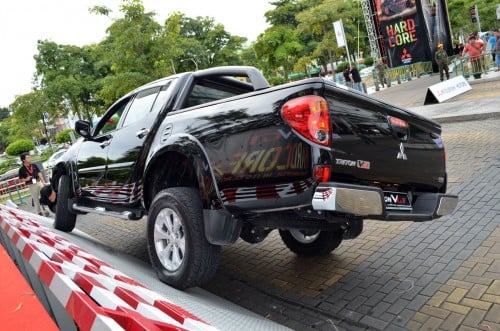
We started from Kuching’s Four Points Hotel and made a big 220 km loop before ending up in Damai. The route was a good mix of on and off-road sections. In fact, I’ve never been to a test drive event with such a big emphasis on off-road driving, short of being a dedicated off-road event. Not complaining though!
Let’s get the less important things out of the way first. The Triton was a revolutionary design when it debuted five years ago, and it still looks modern today, even if some “wow” has been lost due to familiarity. A VGT-powered example can be spotted via the chrome “fangs” on the bumper extender, larger 17-inch alloys and matte black roll bars. I personally don’t dig the shiny stuff up front, but as a whole, the VGT looks bolder and sportier.
There’s some useful new equipment to be had, too. Inside, you’ll find a new Kenwood head-unit with Bluetooth, iPod and USB connectivity. The single-DIN player looks good with blue and white illumination.
The RV multi info meter panel (shows average FC, range, barometer, compass, altimeter, temperature, etc) adds some gadgetry cool to an otherwise simple dashboard. Front parking sensors join the regular rear ones, and there’s a visual display at the base of the windscreen. There’s an on/off switch for the front sensors.
The Triton’s dashboard is attractive for a truck, and is actually more boldly styled than MMC’s own Lancer series, in my opinion. Nothing great material-wise; this is a truck, so the panels feel more robust than plush. Less shine on the main dash moulding and a more attractive texture (pinstripes now) would be good, but it’s not a deal breaker.
Another point on the wish list is more thigh support for the front seats, which are rather flat bottomed. At the back, it’s as good as it gets for a truck. If you want a pick-up truck, but regularly fetch people you love, the Triton is currently the best option.
However, the most important point here is that the VGT improvements really make a difference in the drive. Snail-like Lite aside, the Triton has never been accused for being underpowered, but this VGT engine is significantly stronger in pull.
Give the gas pedal a bootful and you’ll notice that lag isn’t an issue, and the “flat torque” Mitsubishi is so proud of makes a difference – instead of easing off to the next gear ASAP, it’s worthwhile extending the engine here.
The Triton VGT is a big upgrade – besides the engine, MMC has thrown in a new gearbox as well. The old four-speed auto makes way for a five-speeder with Sports Mode.
Usually, this stick-shift driver rarely uses manual selection on good automatic vehicles (if I’m forced to take matters into my own hands, it’s not doing a good job), but the manual override function on the Triton VGT is a valuable addition.
In our off-road stint, which included some steep slopes and declines, the power to choose your gear and utilise engine braking was very welcome. First gear, foot off the gas and rolling down a slope may be the poor man’s Hill Descent Control, but it works.
Engine braking is good to minimise braking on loose ground, and storming through the estate was made more fun. Speaking of that, the Triton is no mere pretty boy, it’s a tough lad that can follow the Hilux anywhere off the beaten path. MMC has more Dakar Rally wins than any other manufacturer, and I’m sure that counts for something!
Back on tarmac, the transmission’s extra ratio benefits cruising economy; MMM says that the Triton VGT does 14.4 km/l at a 90 km/h cruise, which is just 0.1 km/l poorer than the standard 2.5L AT variant, despite the extra firepower. The engine ticks at a subdued 2,100 rpm at 110 km/h.
The pick-up truck market isn’t a cushy place to be in, and it’s about to get more crowded. Good thing then that the improvements introduced in the Triton VGT brings it, to me at least, above every truck on sale now. The combination of stylish looks and great space with more power and more gears will ensure that the Triton will not sink when the big waves come.
Looking to sell your car? Sell it with Carro.

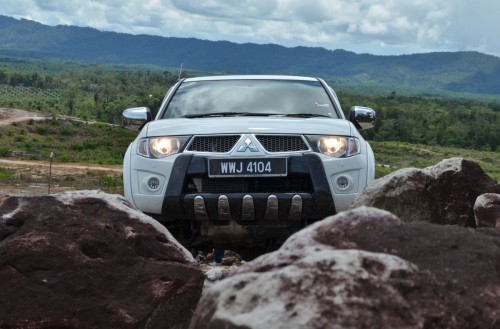
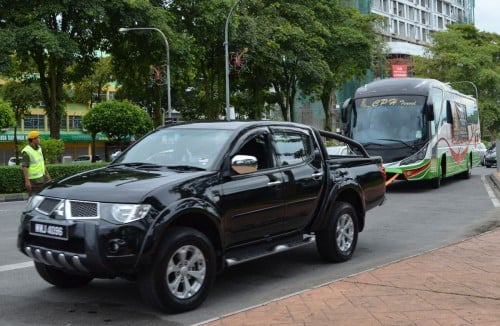
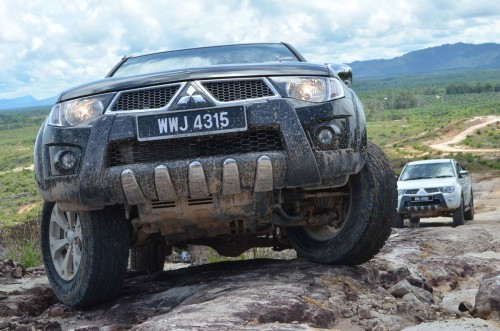
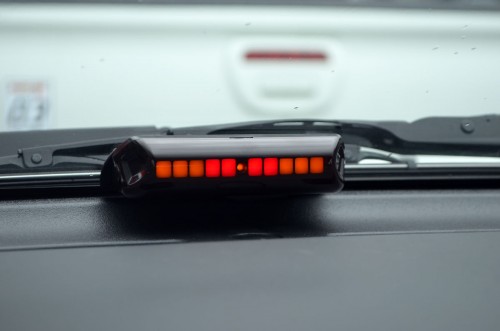
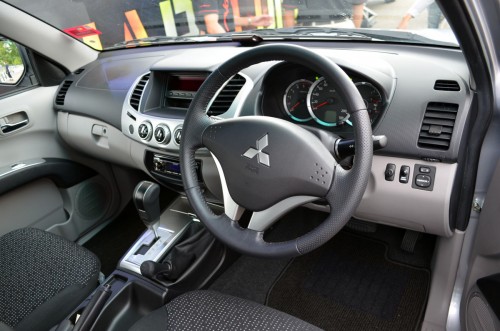
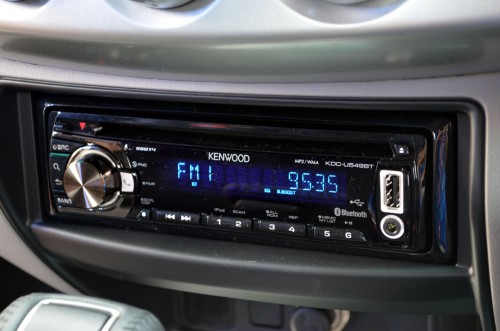
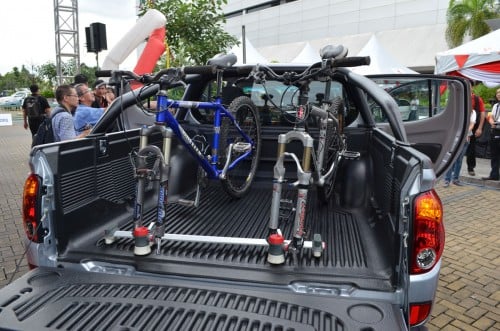
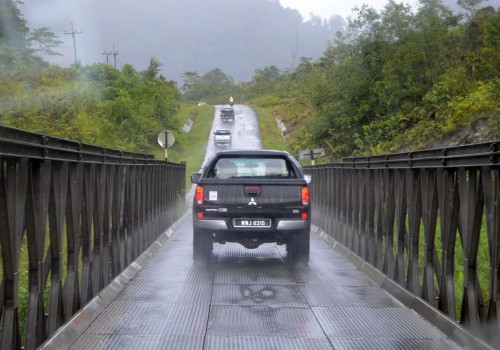
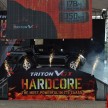
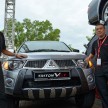
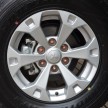
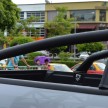
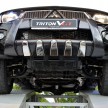
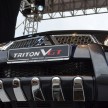
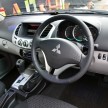
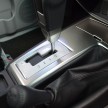
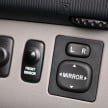
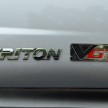
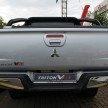
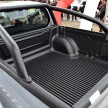
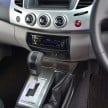
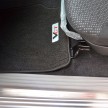
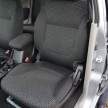
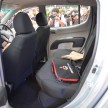


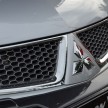
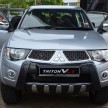
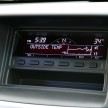

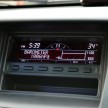
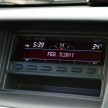
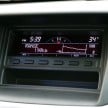
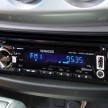
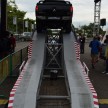
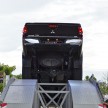
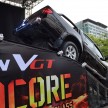
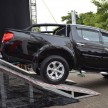
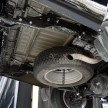
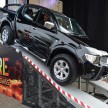
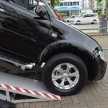
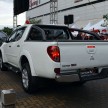
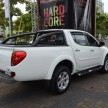
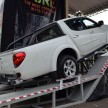
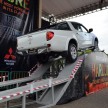
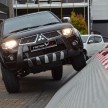

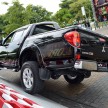
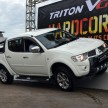

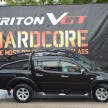
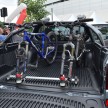
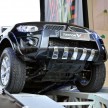
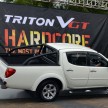

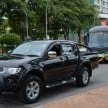
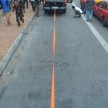
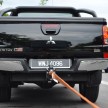
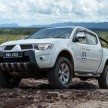
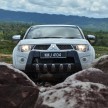
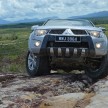
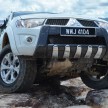
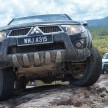

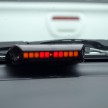












AI-generated Summary ✨
Comments on the Mitsubishi Triton VGT highlight positive impressions of its drivability, engine performance, and interior quality, with some users praising its throttle response and wider power band. Test drives compare it favorably against other models like the Ford Ranger and Chevy Colorado, citing superior response and ride comfort. However, there are concerns about after-sales service, availability of spare parts, and certain features such as the seat quality and vehicle interior. Some commenters also discuss engine specifications, fuel efficiency, and potential problems like turbo issues in similar models. Price discussions and comparisons with other trucks and models are prevalent, with suggestions for more features like manual headlight adjusters. Overall, the sentiment is mostly appreciative, but some express disappointment with after-sales support and minor vehicle aspects.